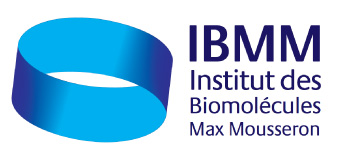Playing with molecular rings and strings – new directions for nanoscale switches, machines and motors
Séminaire Chimie IBMM/ED459
Prof. Alberto
Le Mardi 24 Janvier 2023 à 11h
Délégation Régionale CNRS, Amphithéâtre (1919 route de Mende)
Date de début : 2023-01-24 11:00:00
Date de fin : 2023-01-24 12:30:00
Lieu : CNRS amphi DR13 (accès contrôlé)
Intervenant : Prof. Alberto
CLAN Center for Light Activated Nanostructures, CNR & Università di Bologna, Italy
The construction of molecular scale devices and machines have formidably stimulated the creativity of chemists in the past three decades.[1,2] The interest on this kind of systems arises from their ability to perform a (useful) function in response to chemical and/or physical signals (e.g., light). Mechanically interlocked molecules exhibit appealing structural and functional properties for the construction of nanoscale devices and machines; molecular shuttles based on rotaxanes constitute common examples.[2]
Here I will describe investigations undertaken in our laboratories, aimed at inducing and controlling nanoscale movements in rotaxanes and related species to perform functions such as transmitting motion between sites[3] (see Figure) and activating mechanically chiral structures for enantioselective guest recognition.[4] From a fundamental viewpoint these systems behave as molecular switches under thermodynamic control. Appropriately designed architectures, however, can exploit an energy harvesting process to operate away from thermodynamic equilibrium.[5] Moreover, by exploiting energy and/or information ratcheting effects, directional and autonomous movement of the molecular components can occur.[1,2] We have combined this strategy with a minimalist chemical design to realize artificial nanoscale pumps powered by light[6] and electricity.[7] Besides their interest for fundamental science, these systems have the potential to bring about radical innovation in catalysis, materials science, energy conversion, robotics and medicine.[8]
(Scheme – see illustration in attached PDF abstract)
References
1. V. Balzani, A. Credi, M. Venturi, Molecular devices and machines – concepts and perspectives for the nano world, Wiley-VCH, Weinheim, 2008; C. Bruns, J. F. Stoddart, The nature of the mechanical bond: from molecules to machines, Wiley, Hoboken, 2016.
2. M. Baroncini, et al., Chem. Rev. 2020, 120, 200.
3. S. Corra, et al., Chem 2021, 7, 2137.
4. S. Corra, et al., J. Am. Chem. Soc. 2019, 141, 9129.
5. F. Nicoli, et al., J. Am. Chem. Soc. 2022, 144, 10180.
6. G. Ragazzon, et al., Nat. Nanotechnol. 2015, 10, 70; A. Sabatino, et al., Angew. Chem. Int. Ed. 2019, 58, 14341; J. Groppi, et al., Angew. Chem. Int. Ed. 2020, 59, 14825; S. Corra, et al., Chem. Eur. J. 2021, 27, 11076; M. Canton, et al., J. Am. Chem. Soc. 2021, 143, 10890; S. Corra, et al., Nat. Nanotechnol. 2022, 17, 746.
7. G. Ragazzon, et al., Angew. Chem. Int. Ed., in press.
8. S. Corra, et al., Adv. Mater. 2020, 32, 1906064.
Acknowledgements. Support from the European Union (H2020 ERC AdG “Leaps” 692981, FET-OPEN “Magnify” 801378, ITN “ArtMoMa” 860434) and the Ministero dell’Università e Ricerca (Grants 20173L7W8K and R16S9XXKX3) is gratefully acknowledged.
Contact local IBMM : Dr. Frédéric
